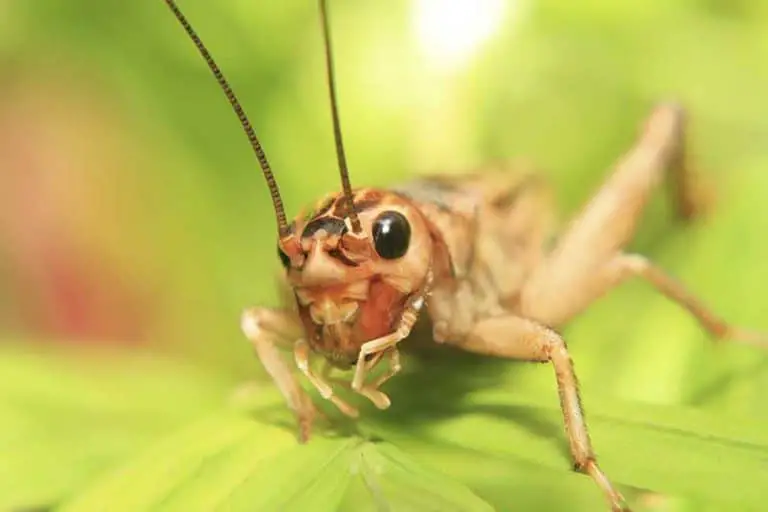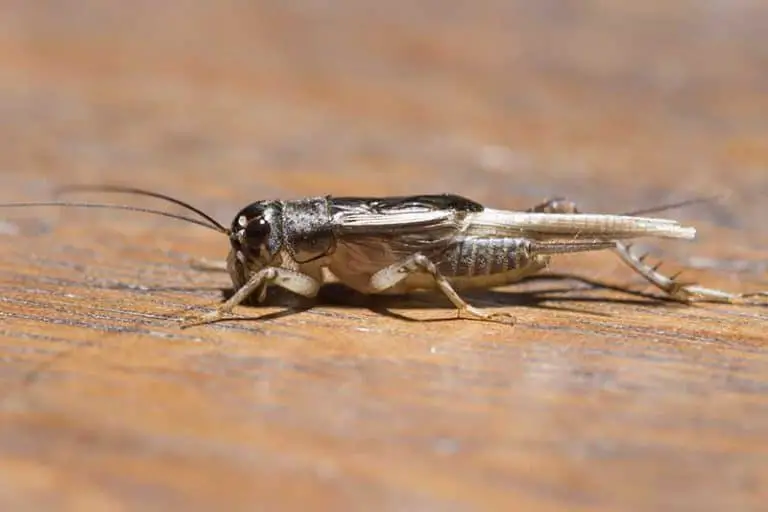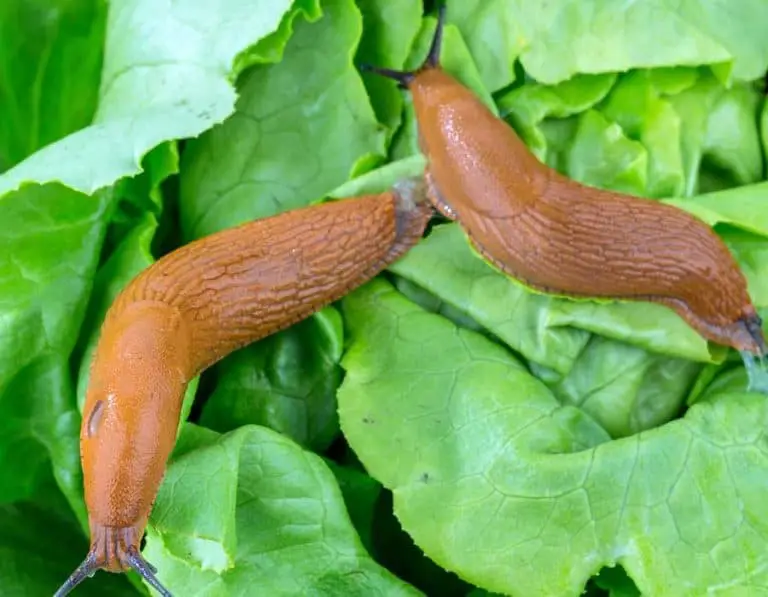What’s Eating My Mint Plant?
Mint is grown all over the world. It’s a type of perennial herb that has many health benefits. It smells and looks good as well.
Mint also has many types of pests. Some of them can’t be considered pests while other bugs can even kill mint if they eat too many leaves.
Moths, aphids, and caterpillars eat mint. Spider mites and certain types of loopers such as cabbage loopers also eat mint leaves. These bugs can be prevented with garlic or soap spray application directly on mint.
Mint can grow without much care. Many types of mint don’t even need watering as they can go long periods without water.
Some of the insects, bugs, or animals that eat mint aren’t seen as they only visit mint on occasion. Others live on mint and can be removed immediately. Here are the most common species that feed on mint.
1. Moths
Moths are one of the species that are highly likely to eat mint. All types of mint can be consumed by certain types of moths.
There are thousands of moth species in North America and each of these species has its favorite foods.
Reakirt’s Blue is a common moth species that eats all types of mint. Spearmint is its favorite food. It feeds on spearmint nectar as much as possible but it also favors other types of herbs.
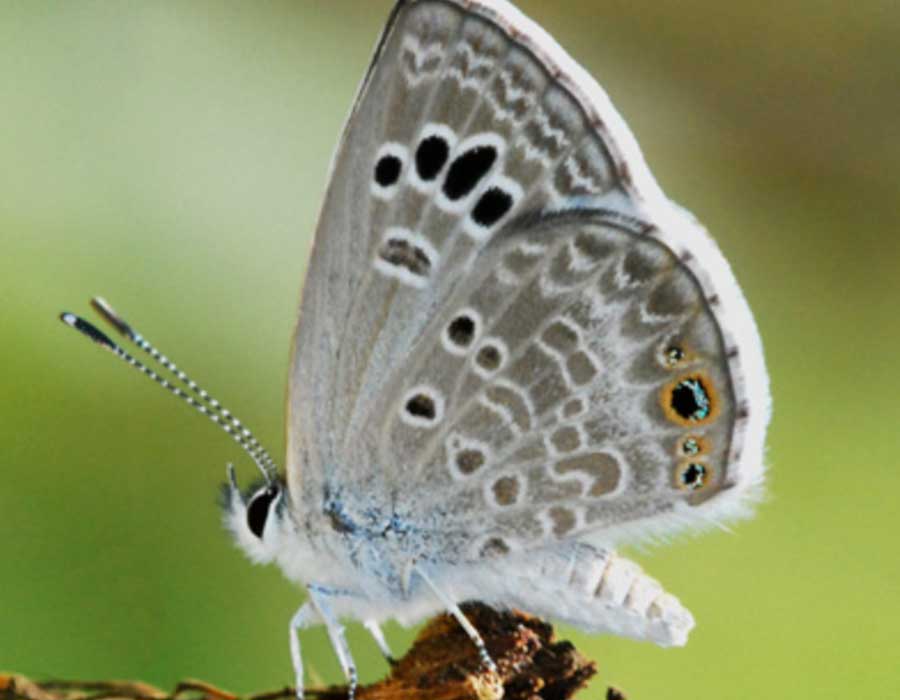
This moth is known to feed on the nectar made by spearmint, also known as the Common garden mint. Gardeners are most likely to grow this type of mint at home due to its low maintenance profile.
Your mint can be affected by Reakirt’s Blue if you live in central Western, and Southern states in the US.
This species is not seen in Northern and Eastern states.
Florida, Texas, New Mexico, and Nebraska are some of the states with very high Reakirt’s Blue populations. This moth is identified by its blue and black color and high resemble of blue and black butterflies.
The species has multiple natural predators and it’s unlikely its role can be detrimental to those growing mint commercially.
However, there are a few steps you can take to keep these moths away from the mint. Spraying spearmint with soap and water should be sufficient to keep these predators away.
It’s best to spray mint in early March as these moths start to become active by mid-March. Re-spraying spearmint a few times during the summer is further recommended as there are 3 broods of the species with a flight season that expands to October.
2. Aphids
Various species of aphids eat mint. However, not all types of mint are eaten by aphids. Unlike moths, aphids can create considerable damage and even kill multiple mint plants in the garden within days so they need to be taken seriously.
Aphids feed on sweet types of mint such as peppermint. They prefer sweet mint as they drink large amounts of sap. Aphids start eating one leaf after another and they even lay eggs on mint as well.
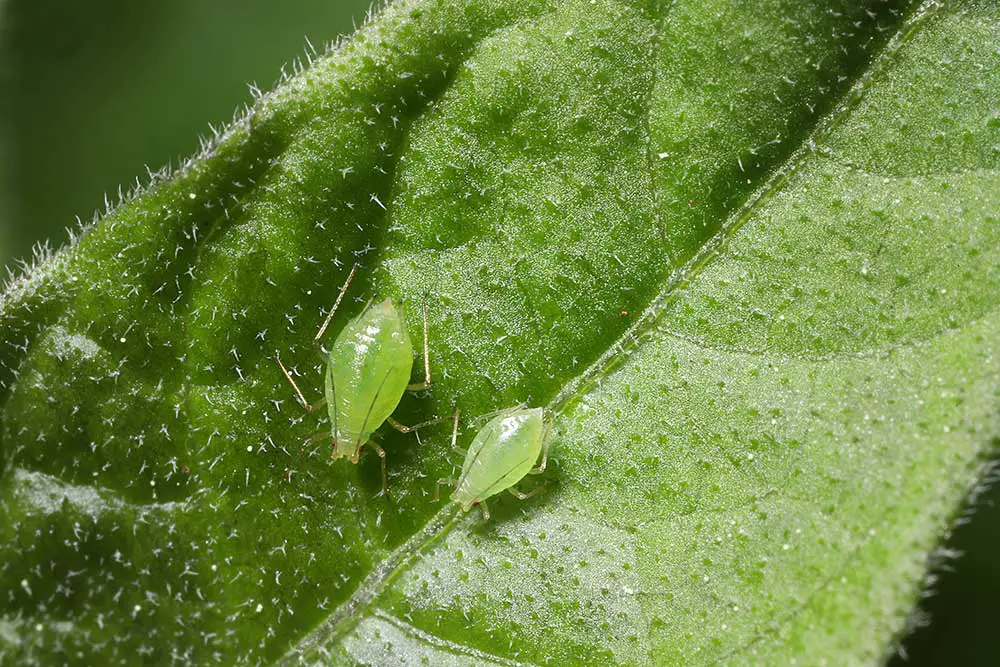
Aphids multiply rapidly. Unlike moths that lay eggs on other plants even if they eat mint, aphids lay eggs on the same mint herbs they consume. Damages can be extensive.
You can identify aphids by their green, brown, yellow, or black color and by their ovoid shape. These bugs don’t bite and are frequently removed by hand. Those into gardening remove them by hand and squash them to kill them on the spot.
Aphids may also invade the garden in high numbers. It’s not time-efficient to remove them by hand at this stage. You can spray neem oil on mint herbs to kill and further repel aphids. Alternatively, you can consider using the gardening hose to wash out all the aphids and the eggs laid on mint.
Aphids also lay eggs in the soil under mint. You can spray a mix of essential oils and water on the soil under mint to kill aphid eggs.
3. Caterpillars
Moth and butterfly caterpillars are a common sight on mint. Green caterpillars are especially common on mint as they use similar color mimicry to improve camouflage.
Caterpillars can be seen as major or a minor pests, depending on the species. Most caterpillars aren’t toxic and can be removed by hand. However, it’s best not to touch caterpillars without thick work gloves as some have irritating bristle-like hairs.
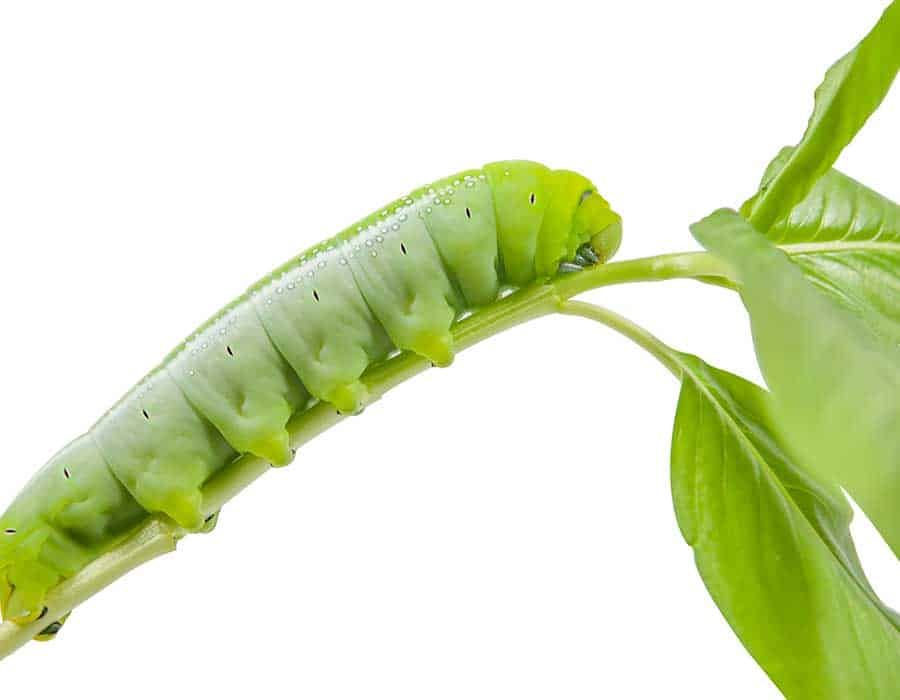
Some caterpillars can cause adverse skin reactions such as rashes and red skin. They have long hairs which can be toxic to some predator species.
Other hair-free caterpillars on mint are mostly brown. These caterpillars use their brown coloring to resemble bird dropping as their defense mechanism. Many birds see them as droppings that taste bad and move along.
The best way to keep caterpillars away is by spraying neem oil or soap and water on mint. This prevents almost all types of caterpillars and can even stop them from pupating if sprayed directly on caterpillars.
4. Spider mites
Spider mites are among the smallest bugs that feed on mint. These mites are so small that appear as red dots on mint leaves. Killing them and keeping them away is complicated as spider mite eggs overwinter on mint or in the soil of mint.
Spider mites mate in very high numbers and as many as 300 eggs can be laid per breeding season by a single mite. This means they can quickly cover mint leaves feeding on sweet sap until the herb can grow no more.
Killing spider mites requires a strong agent. While pesticides kill all mites, they aren’t always a viable option and they can even be health-detrimental if you plant to consume mint in tea or by making mint lemonade. You can sprinkle chili powder on mint to keep spider mites away.
5. Thrips
Thrips are some of the smallest pests that eat mint. They can be as small as spider mites as many thrips are only 0.02 inches in length.
Unlike spider mites, thrips have an elongated body shape and a brown color. You cannot remove them by hand due to their reduced size. You should still eliminate thrips as they can suck as much sap to kill mint.
Soap and water, baking soda and water, as well as a mix of chili powder and water are all viable options against thrips on mint.

These pests can quickly come back whenever it rains or whenever you water mint and remove the sprayed water mix. You may need to re-apply chili powder and water or baking soda and water mixes on a mint after heavily watering the mint.
Thrips are very good at surviving outdoors as well as indoors. These pests can invade mint grown in greenhouses as well. You should spray potted mint as well, just like the mint you grow out in the open in the garden.
6. Mealybugs
Mealybugs are small invasive bugs that feed on mint sap. The small bugs are often white but they can also come in other colors. They have a wax-like outer surface and they might not appear as bugs at all at first.
Mealybugs don’t pierce mint leaves similarly to aphids. The first bite of mint leaves exposes the flesh side of the mint and then eats mint. This means even several mealybugs can be detrimental to mint.
You don’t need the strongest chemical-based solutions to kill pests as small as mealybugs. You can use a mix of alcohol and water to kill mealybugs. Vodka or even apple cider vinegar mixed with water can be effective at killing mealybugs on the spot.
You need to add up to 5 tablespoons of alcohol or vinegar to a water sprayer for the solution to be effective. However, you should also remember that spraying too much alcohol can be detrimental to mint.
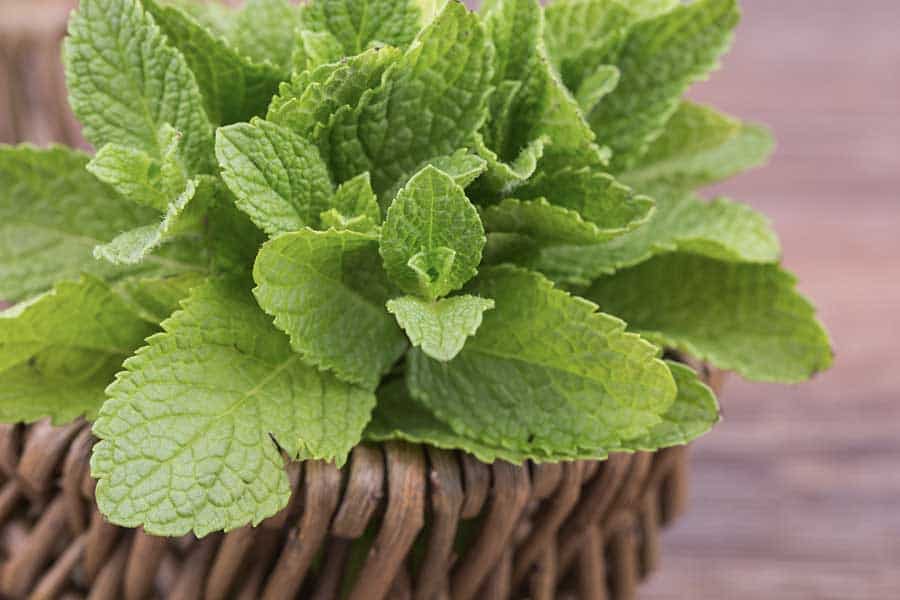
How do keep pests away from a mint plant?
Keeping pests away from mint is not easy, especially since mint doesn’t have as many pests as flowers or vegetables. Natural solutions can prove best, especially when it comes to prevention.
Use chili powder
Sweet or spicy chili powder mixed with water and sprayed on mint is one of the affordable methods of keeping pests away from the mint. Ideally, you add a teaspoon of hot chili (such as jalapeño) to the water sprayed and coat the entire mint herb to keep all pests away.
You can easily wash off the mix when you need mint for cooking or refreshing drinks. Hot chili can even kill certain types of pests on the spot in case you surprise them on mint yourself.
Consider vinegar sprays
Vinegar and water can replace a mix of alcohol and water as a preventive solution against pests on mint. You can use vinegar against a wide range of caterpillars, moths, and other types of invasive pests. At least 1 tablespoon of vinegar is required for a water sprayer to be effective.
One of the benefits of vinegar and water mixes is that you can easily make more and re-apply it monthly on mint to keep all predators away.
Home-made alcohol sprays
Alcohol and water are a more potent version of vinegar and water mixes for mint protection. You can consider alcohol and water mixes if you don’t have the time to re-apply a protective coat as often as with vinegar and water.
Furthermore, it’s not recommended to spray alcohol on mint too often as you don’t want to kill the herb. Refraining from spraying the soil is also recommended as alcohol can get to the root of mint and kill it quickly.
FAQs
Do slugs eat mint?
Slugs are never the reason your mint is dying or the reason why it has chewed leaves. Slugs hate mint as it puts them off. You can use mint to deter slugs from the garden.
Do snails eat mint?
Snails hate mint just as much as slugs. You need to rule out snails as a major mint pest compared to aphids or moths.
Do deer eat mint?
Deer is a known problem in many gardens across North America. Gardens net to woodlands or vast open lands with deer are known to attract a few deer at night or in the morning. However, deer have a very good sense of smell which is bothered by hers with such a pungent aroma as mint.
Do birds eat mint?
Most birds don’t eat raw mint. Some exceptions apply and birds such as parrots are known to eat a large number of leaves. If you grow mint in greenhouses with parrots you’ll soon find out there’s no more mint as these small birds devour all mint, including old mint or dry mint.
Do bearded dragons eat mint?
Bearded dragons are some of the most common pets that eat mint. Your bearded dragon might be eating potted mint you have indoors in the absence of other foods or to change up its normal eating habits.
Summary
Mint might be one of the herbs with a pungent aroma but it still gets a few pests which can even kill it in the case of serious invasions.
From caterpillars to aphids, pests can kill mint if you don’t take preventive action. You may be able to save mint if you act quickly whenever you notice these pests by spraying vinegar and water on them. Some pests such as aphids can even be removed by hand to save the mint.
Preventive measures are superior when it comes to growing tall healthy mint. You can consider simple solutions and mixes made at home to save mint from all pests. Liquid soap and water mixes can be sprayed on mint to keep pests away.
The frequency of the application is just as important as the solution itself. You need to re-apply these solutions through the gardening season since these protective solutions get washed away with rain.
Some types of pests on mint are initially attracted by vegetables. Aphids are among the bugs that can get to the garden to eat cabbage and end up on mint as well. It’s always wise to take pest prevention measures on all herbs, plants, and vegetables that grow next to mint in the garden.

